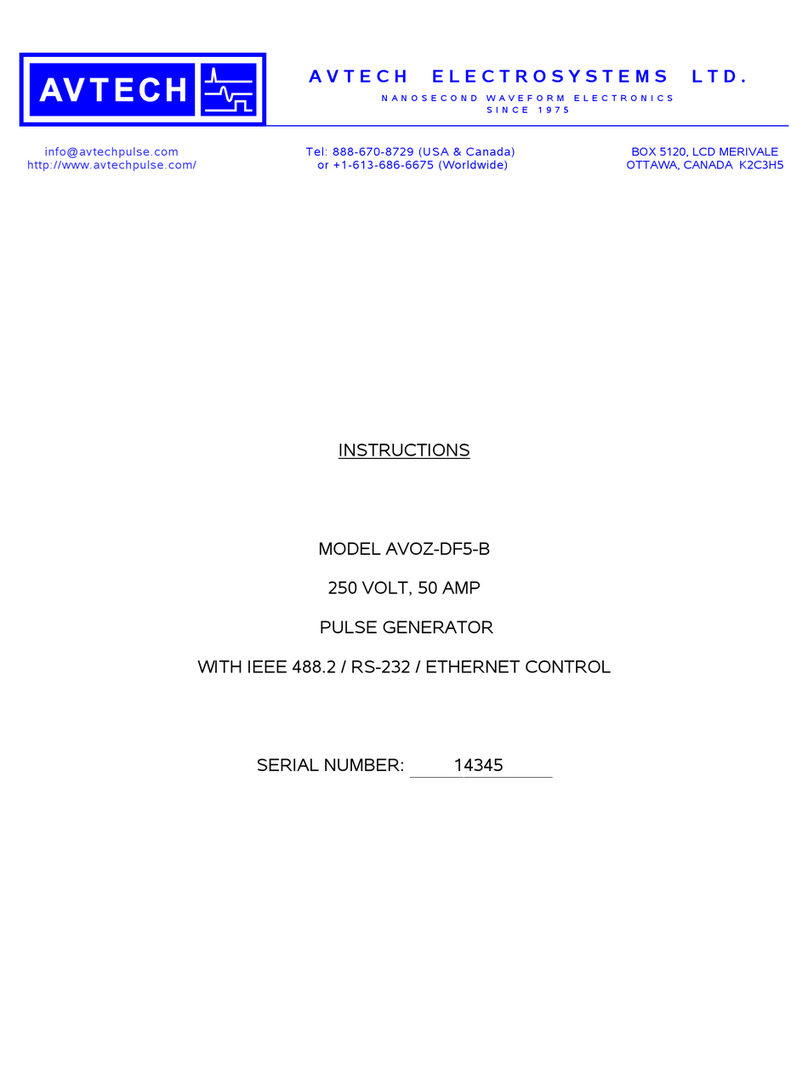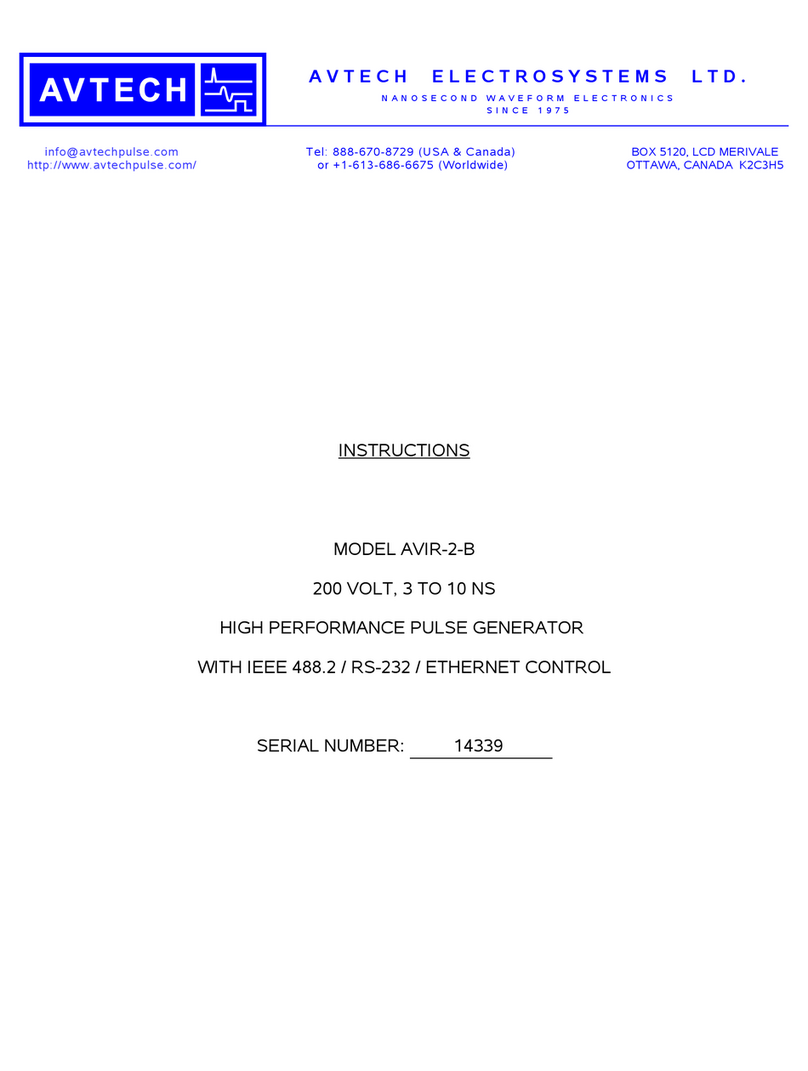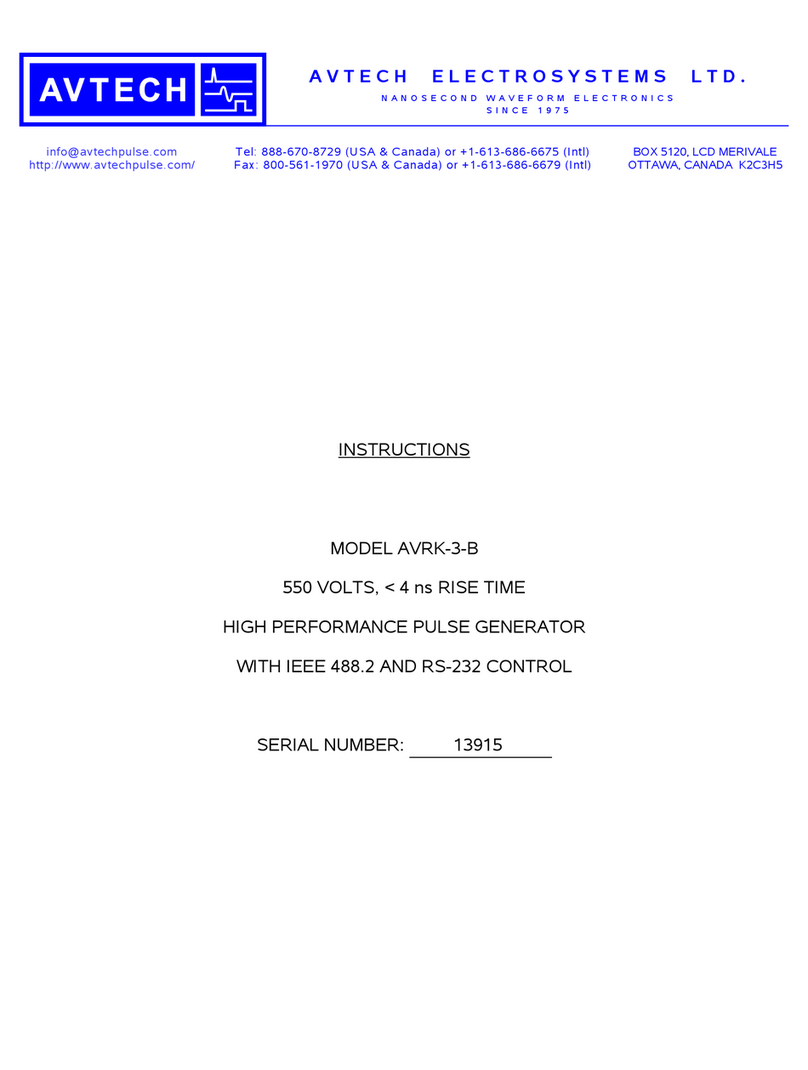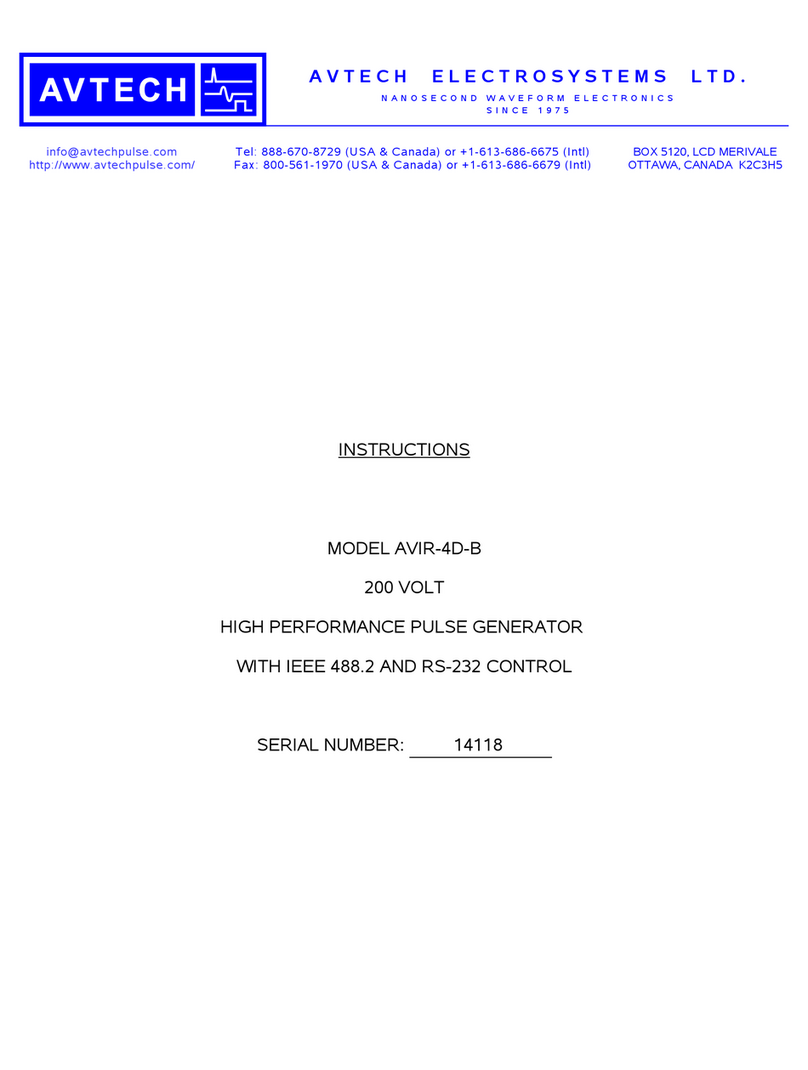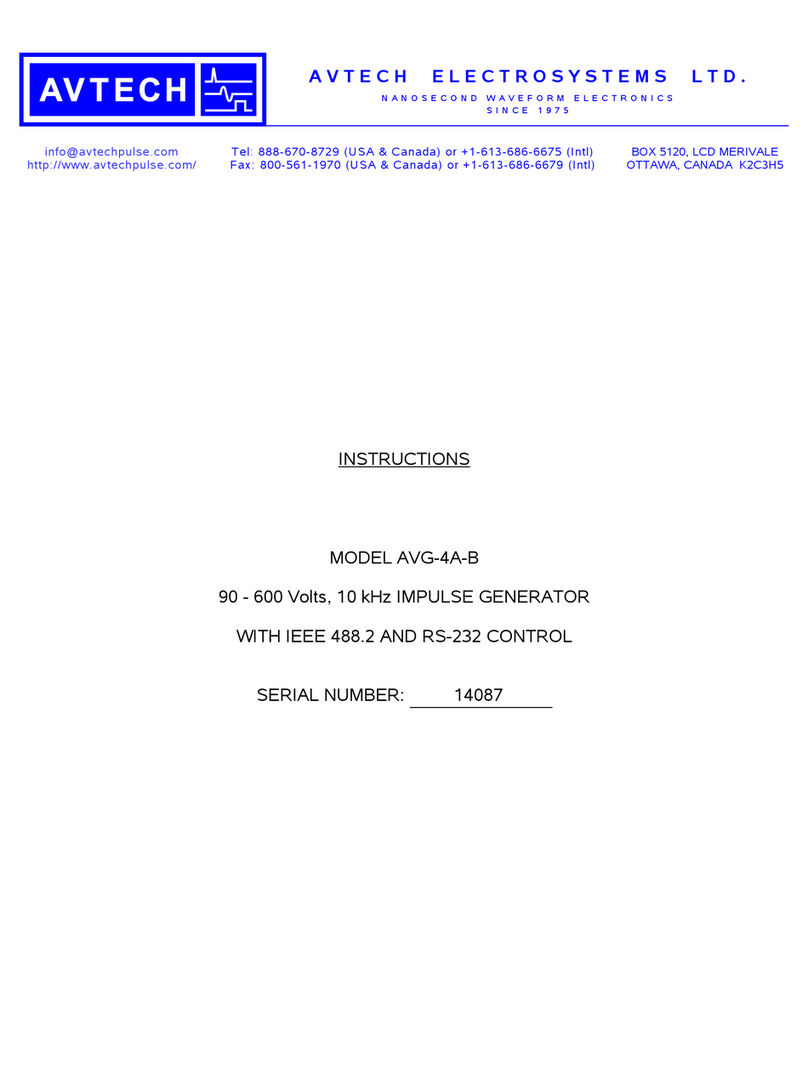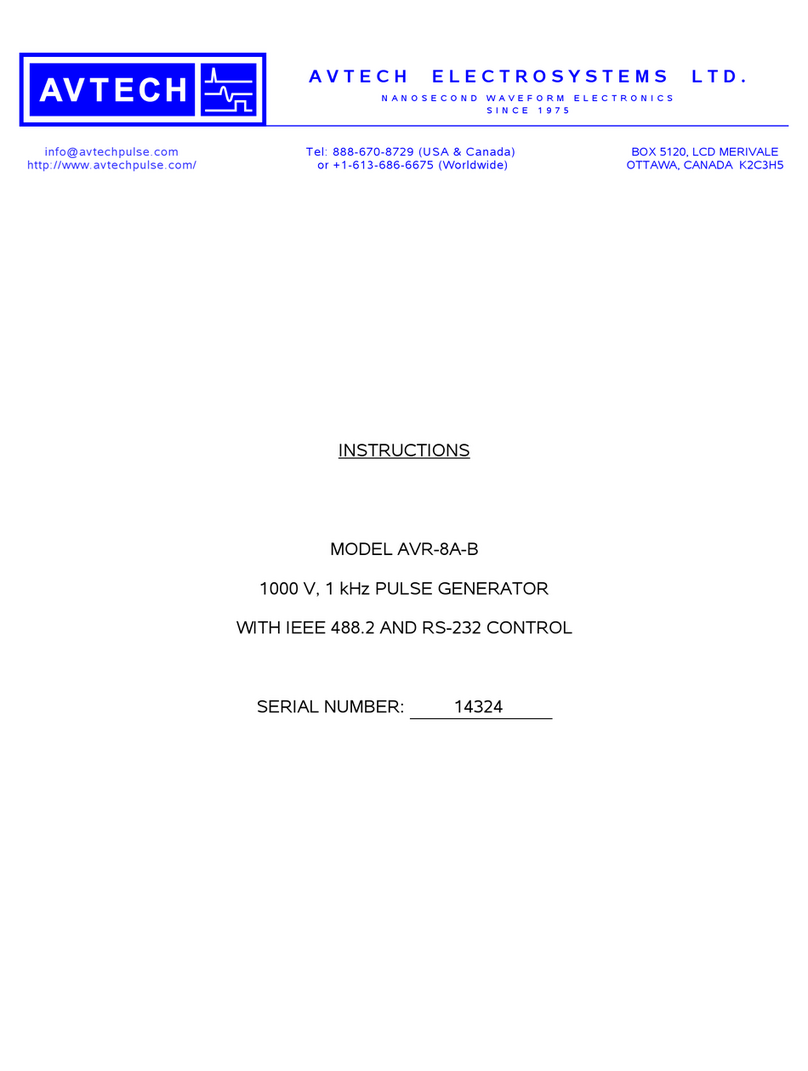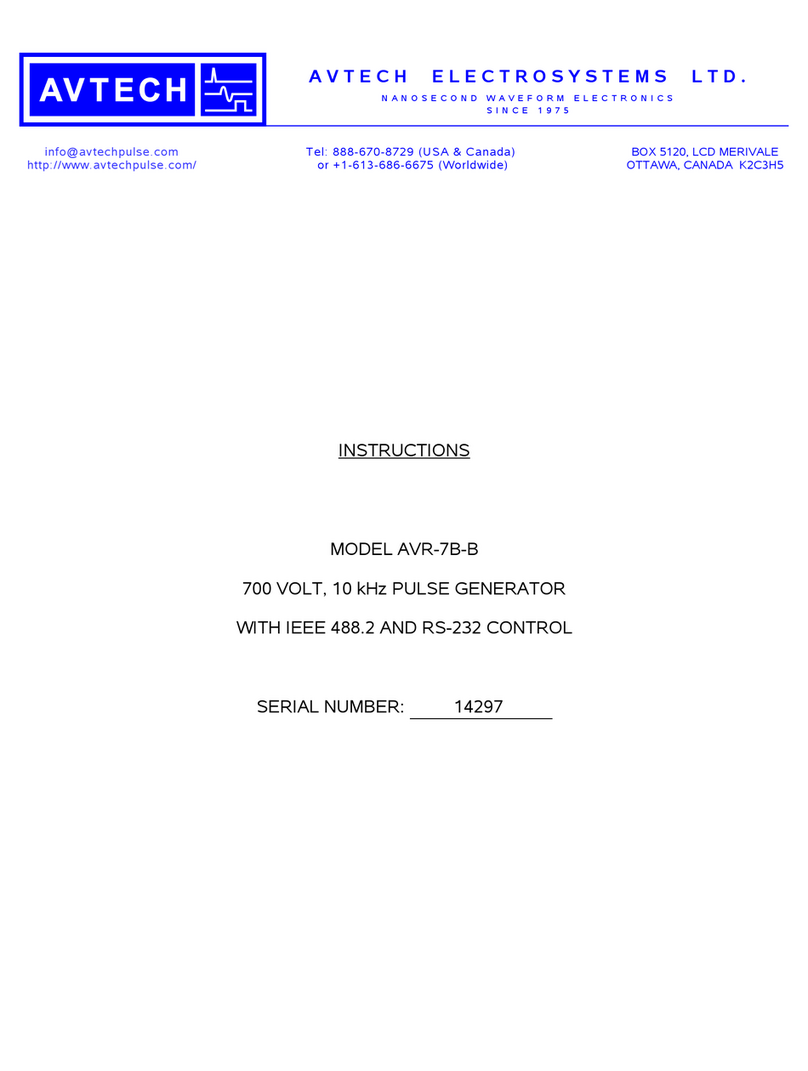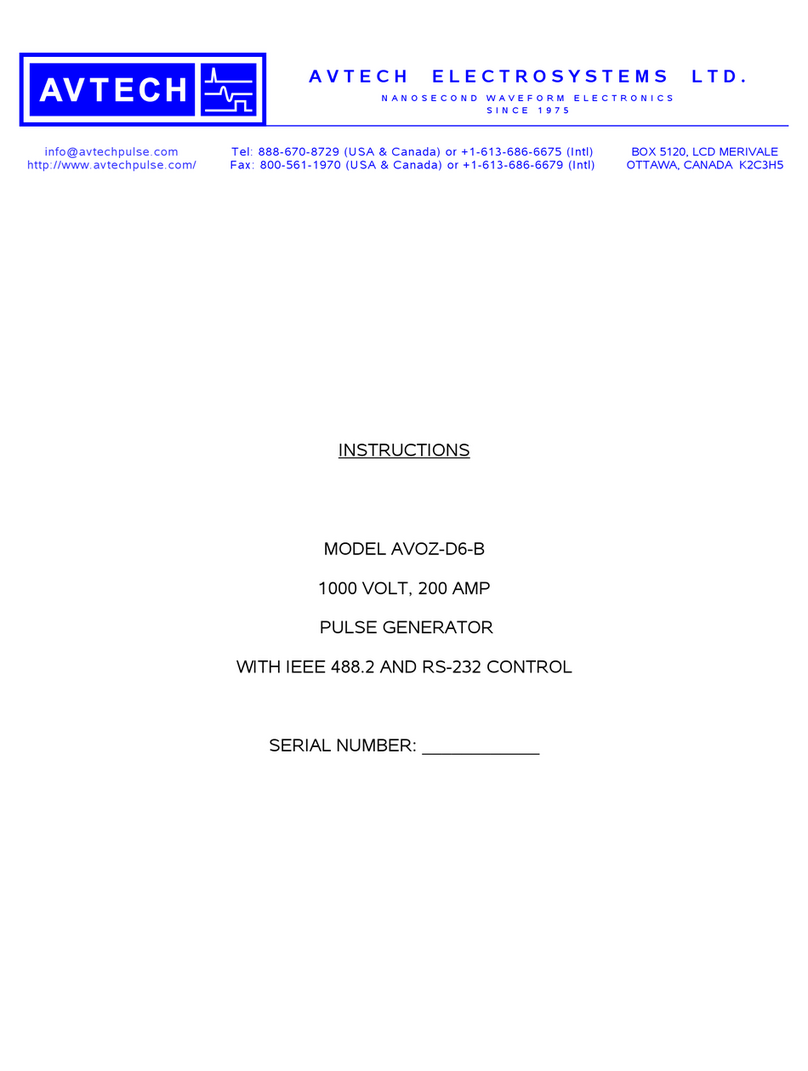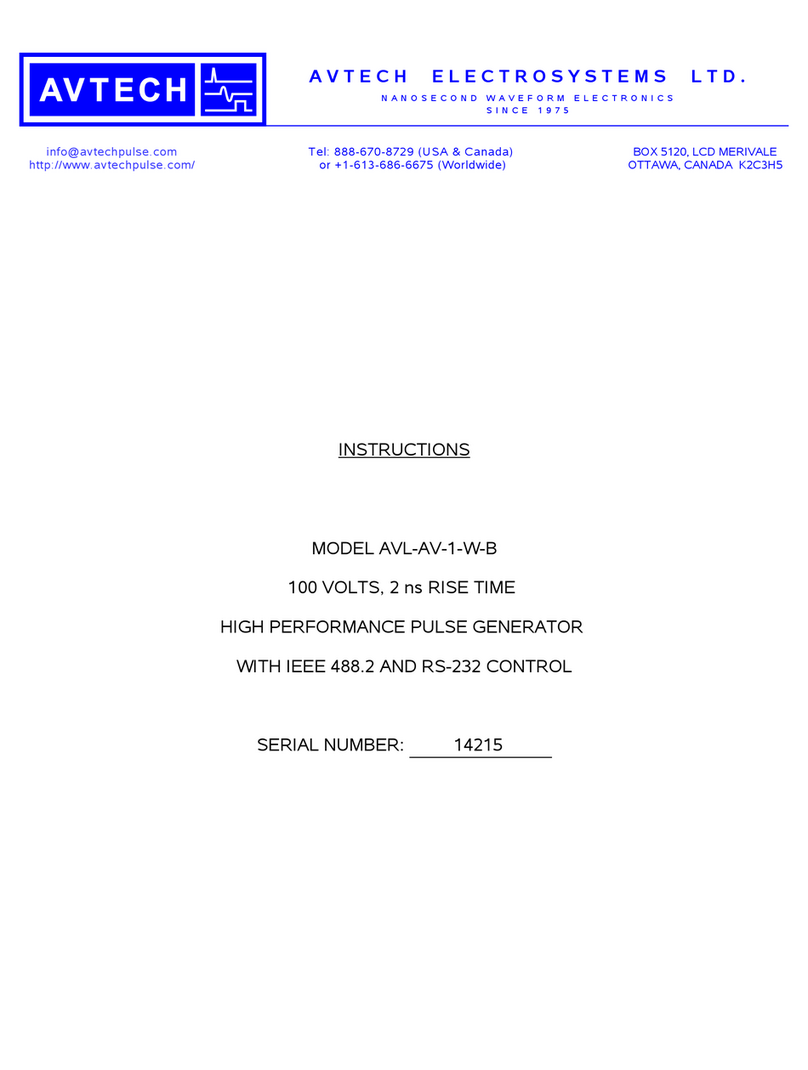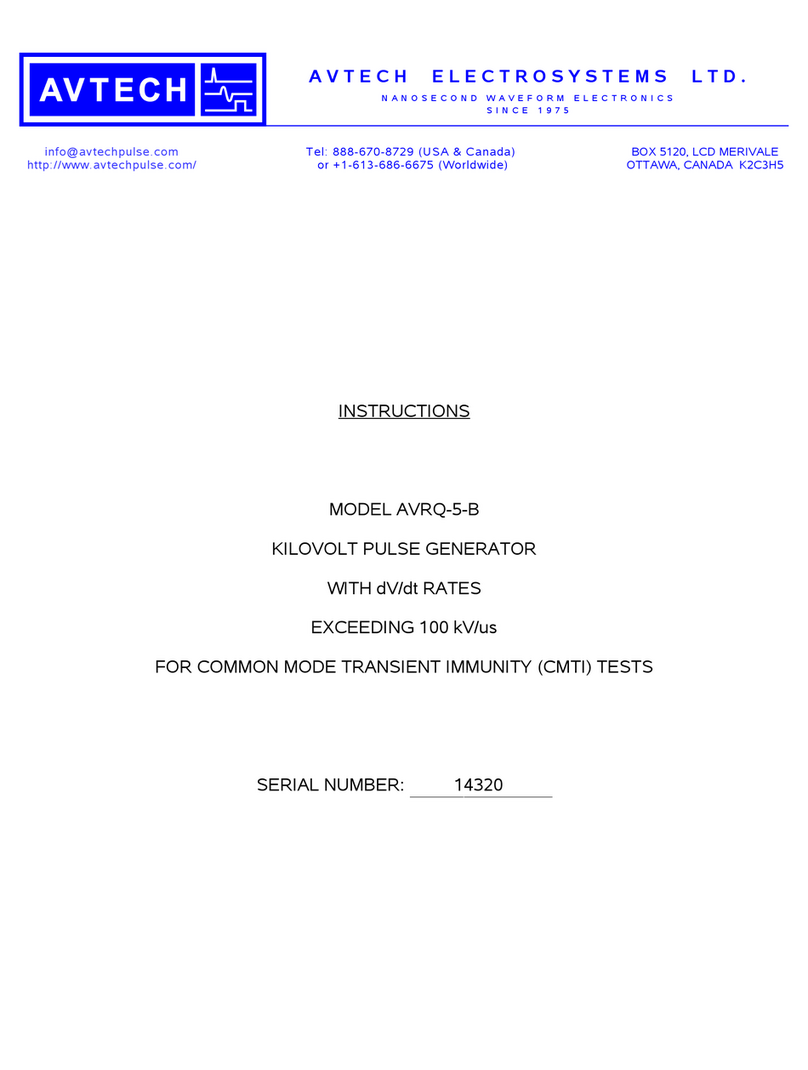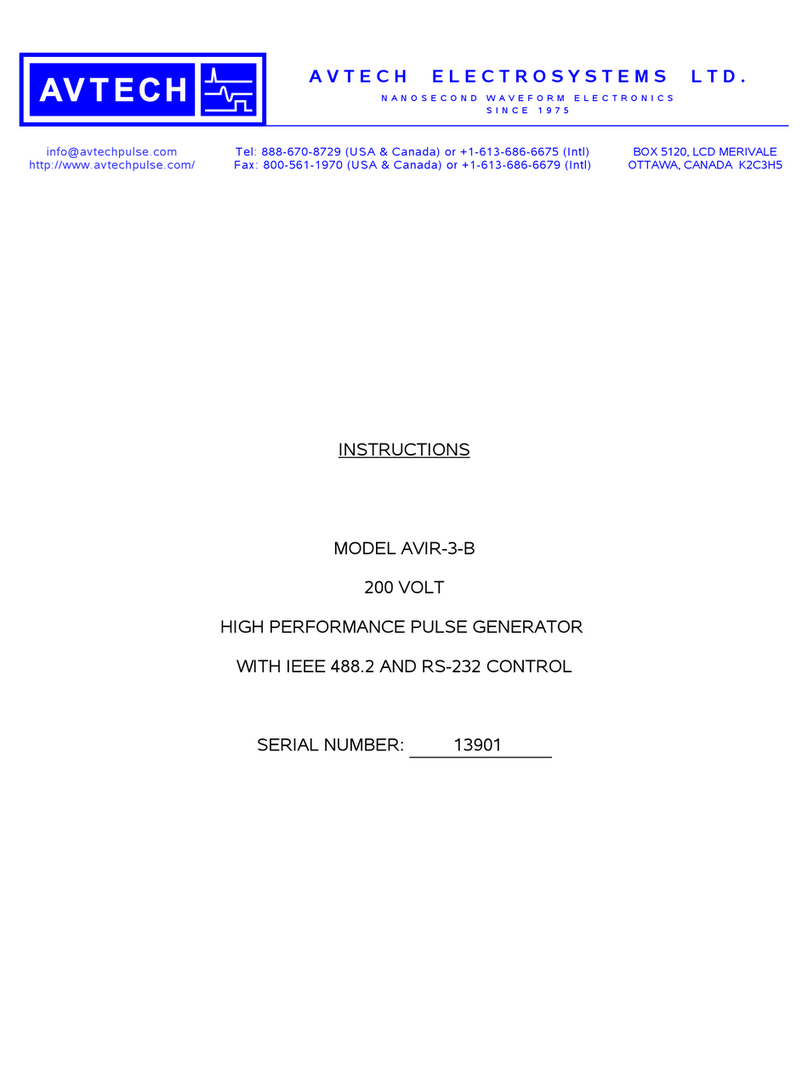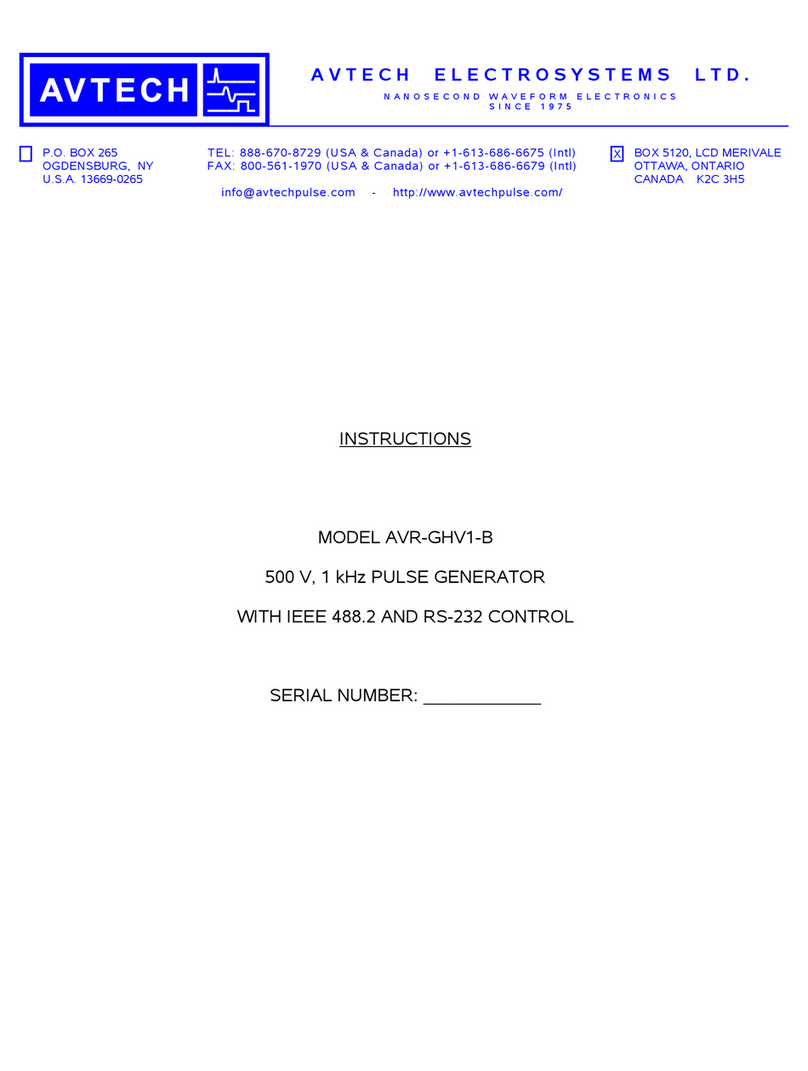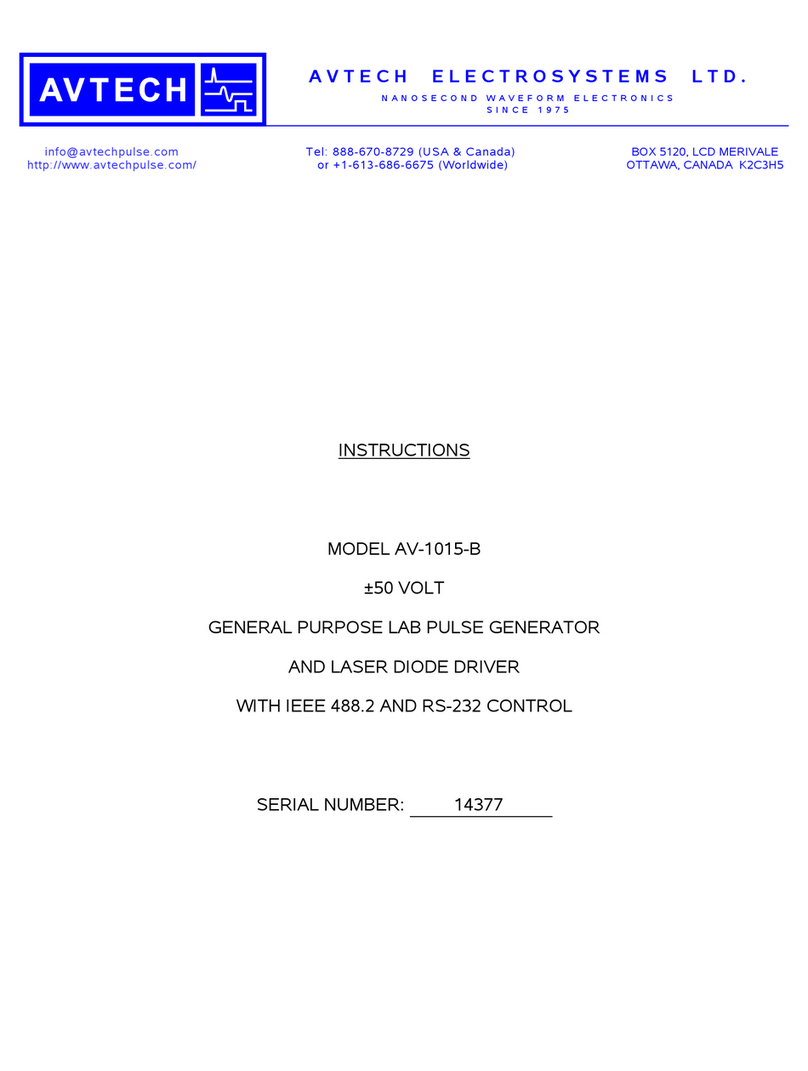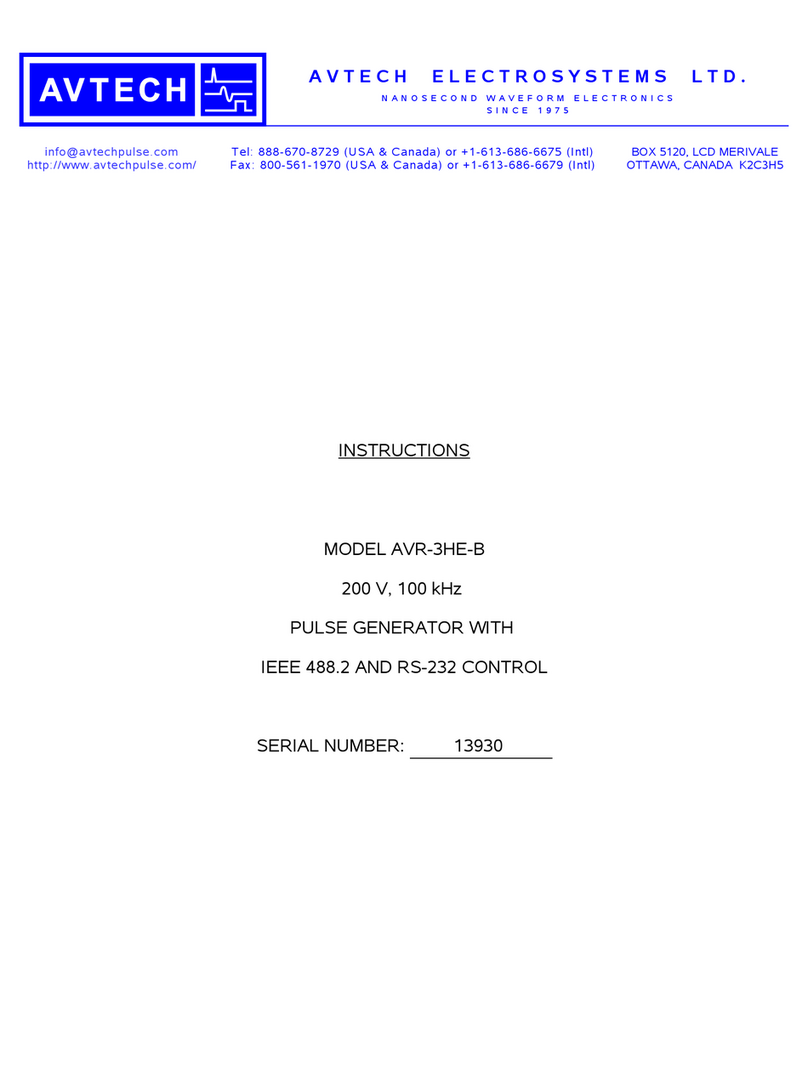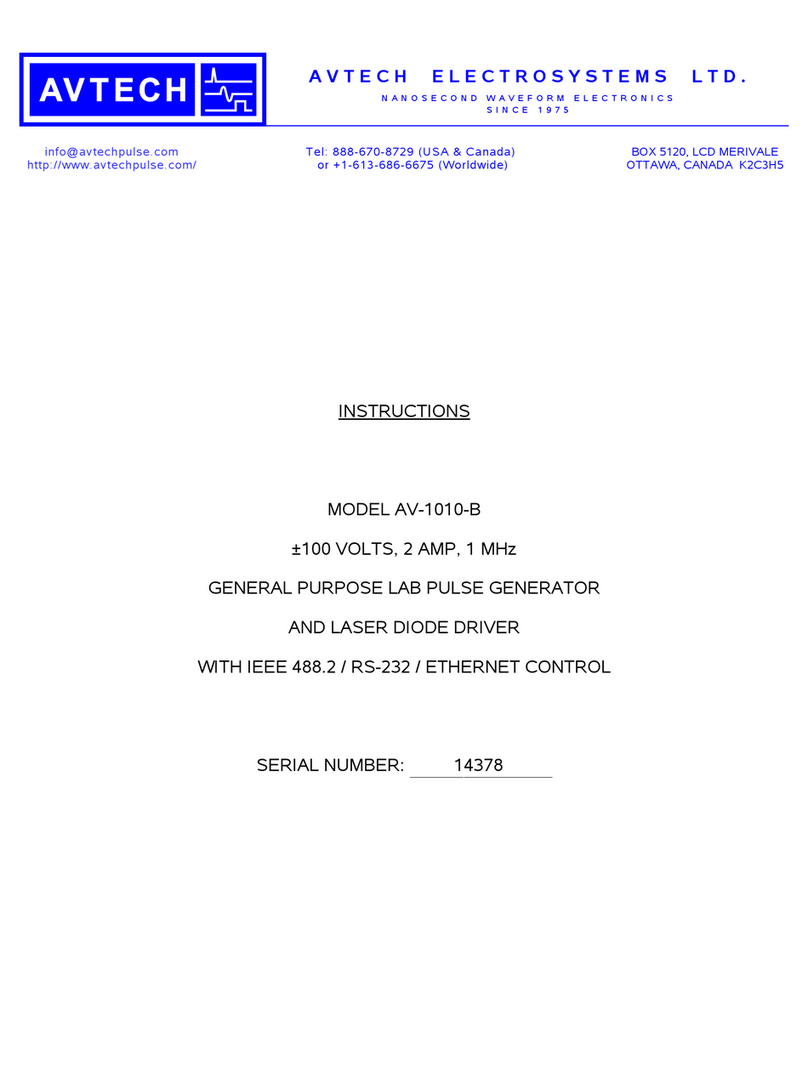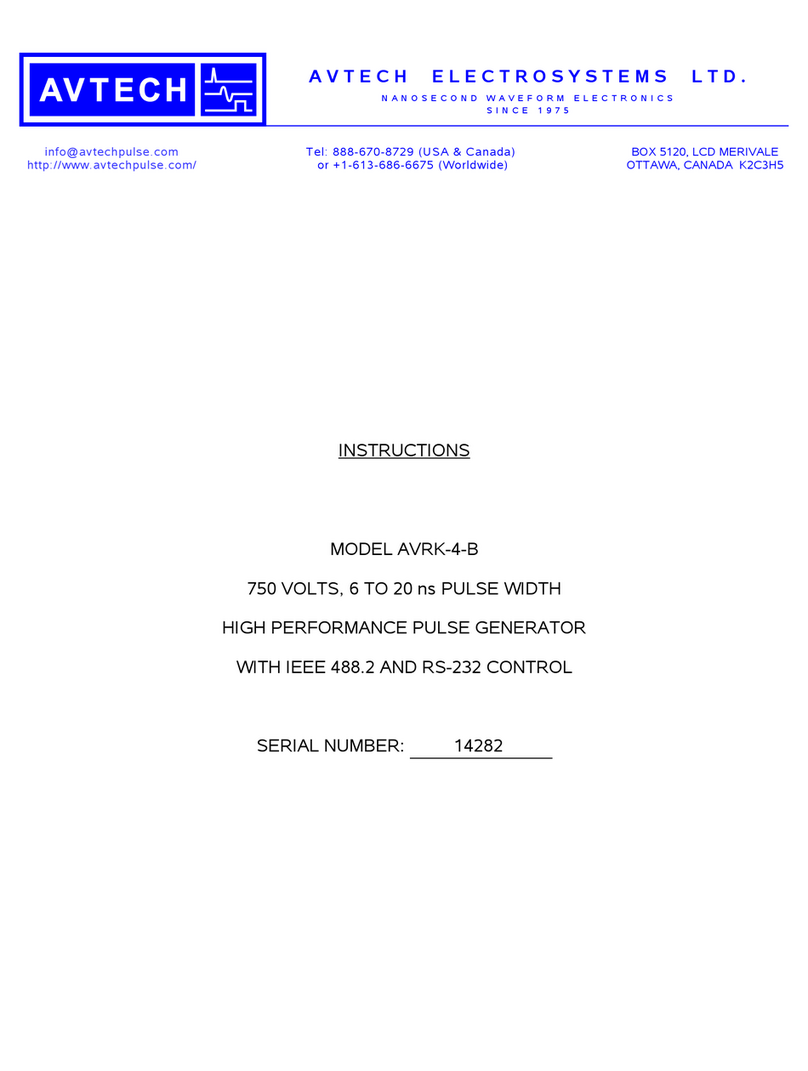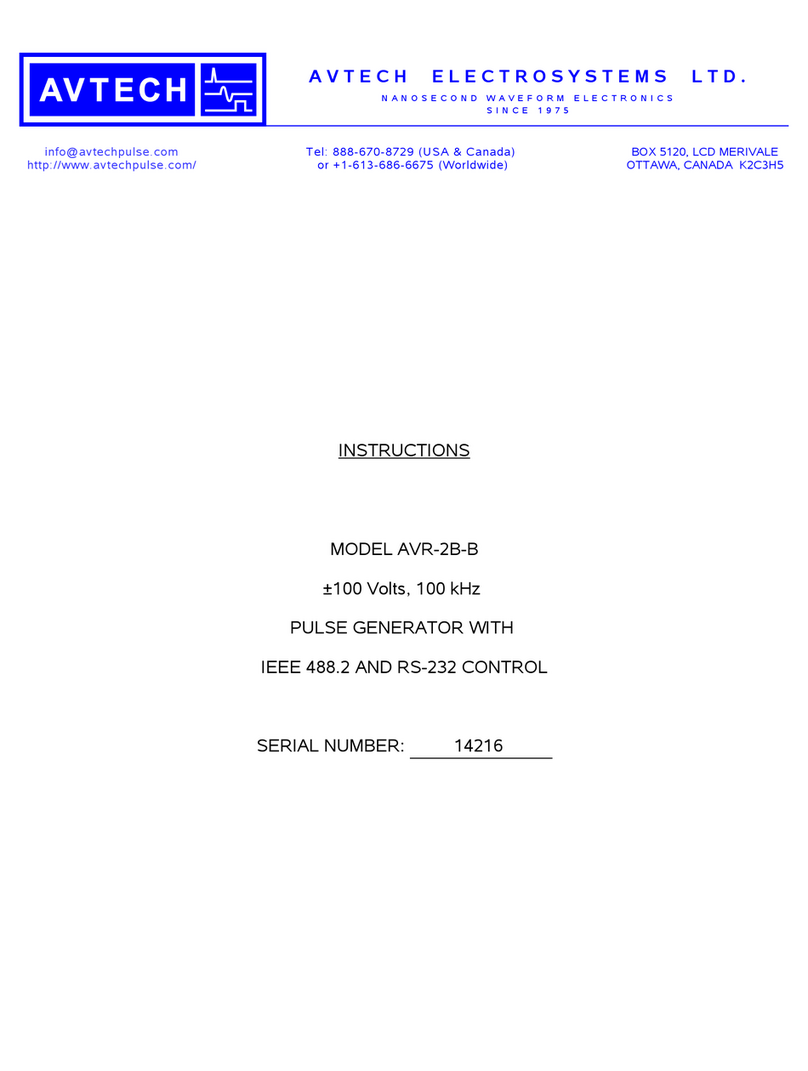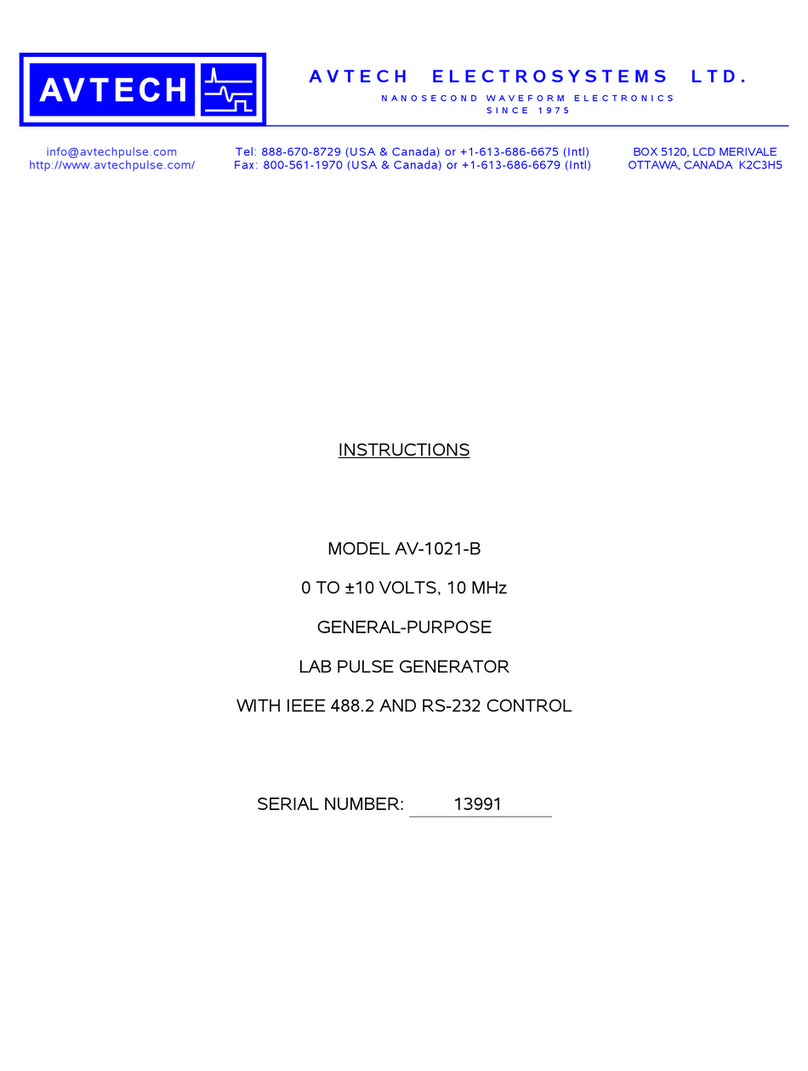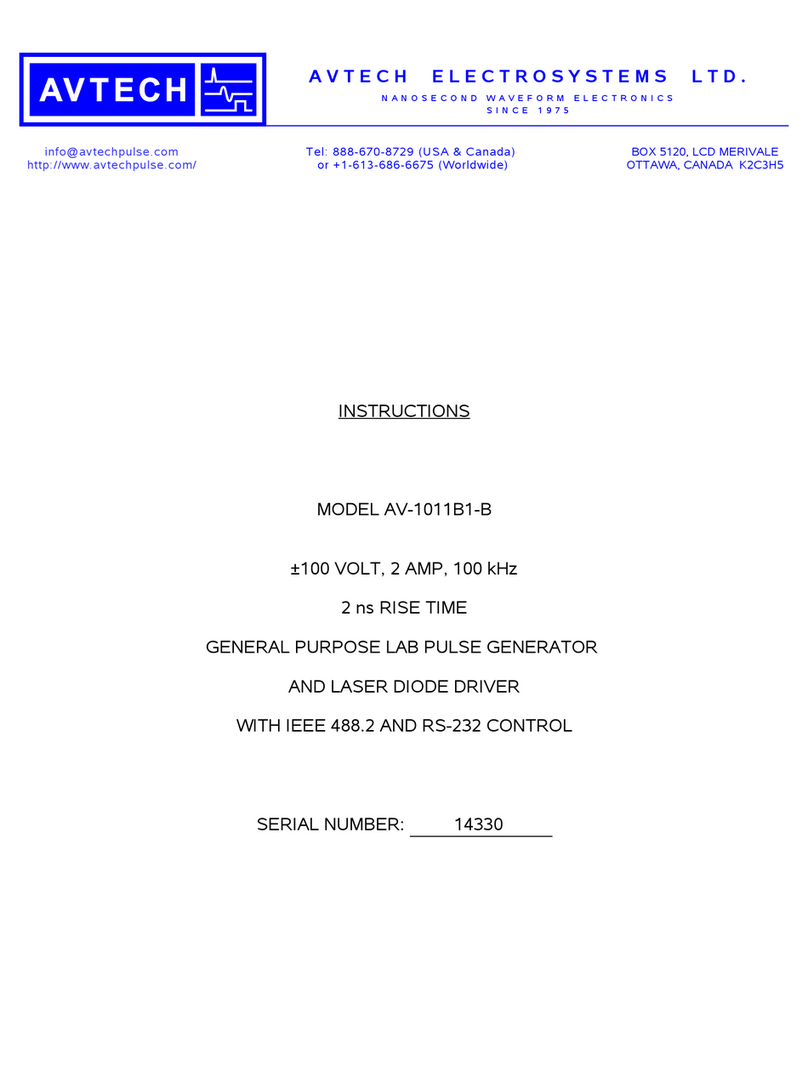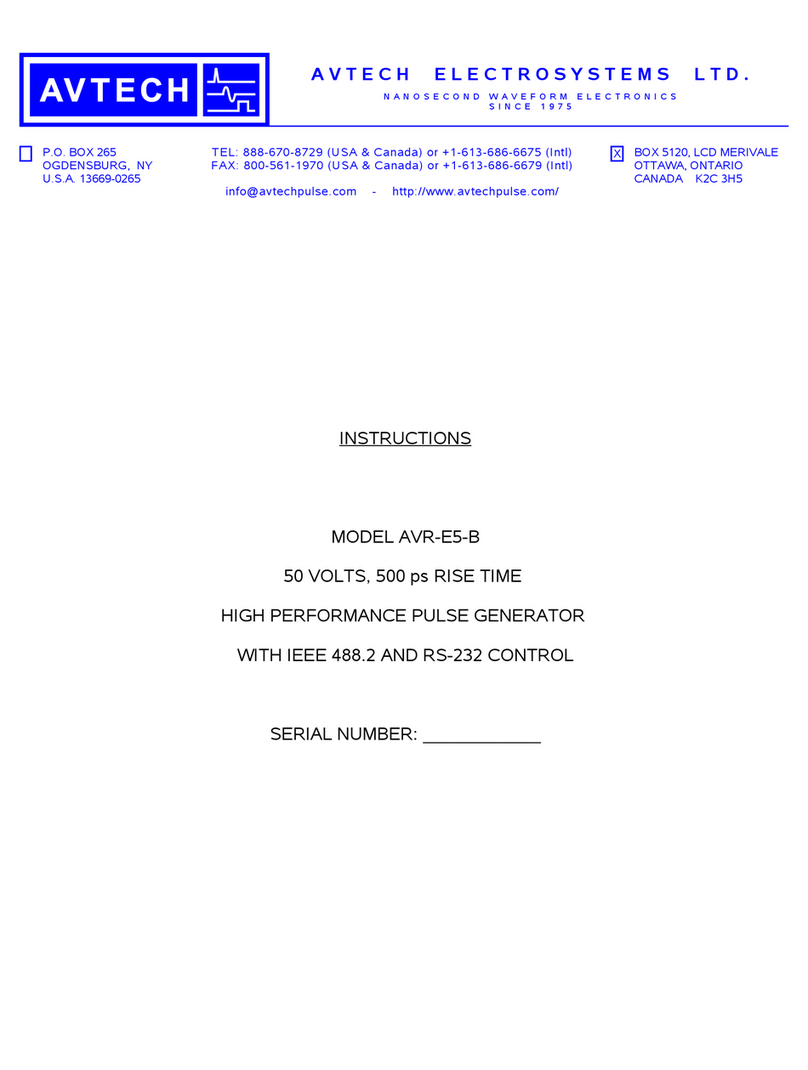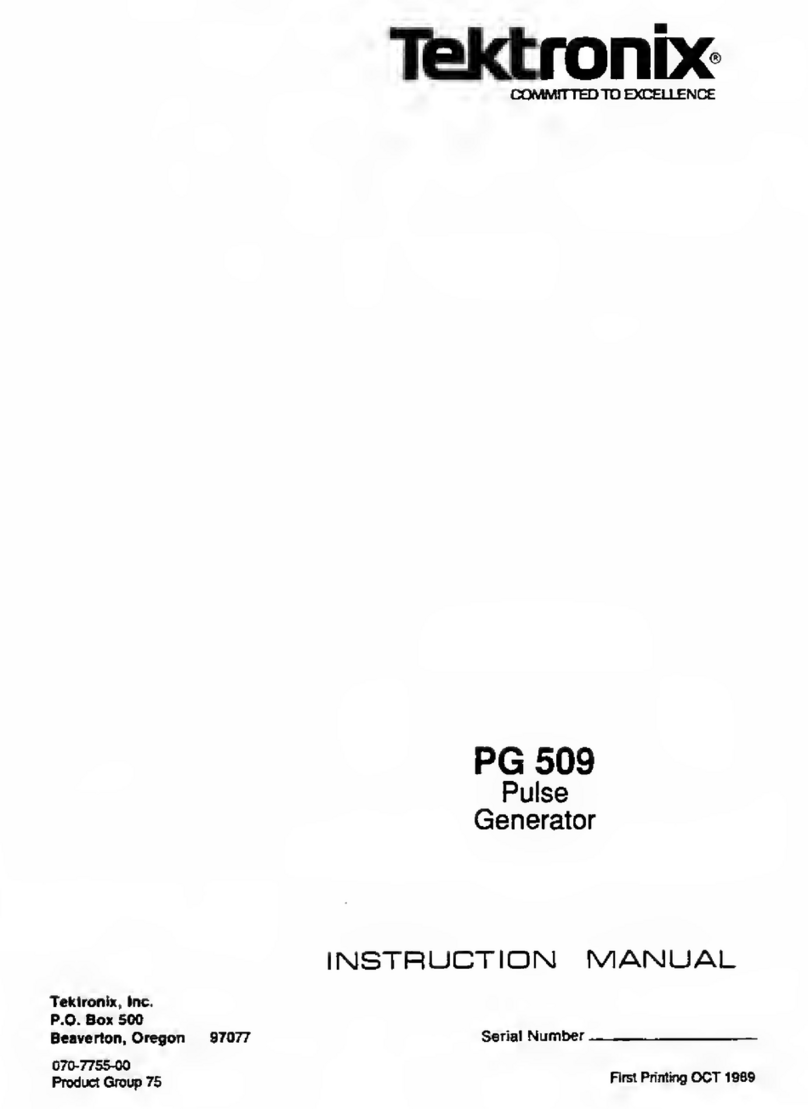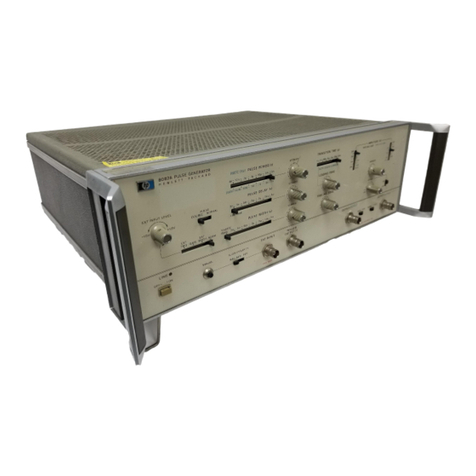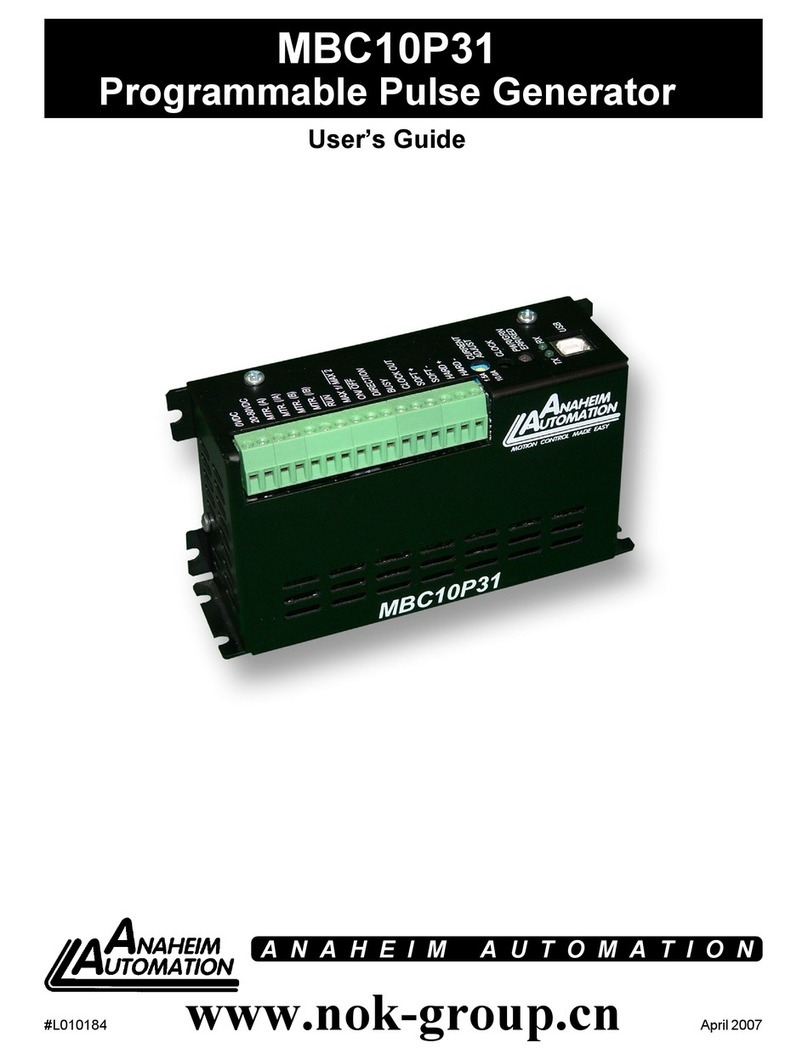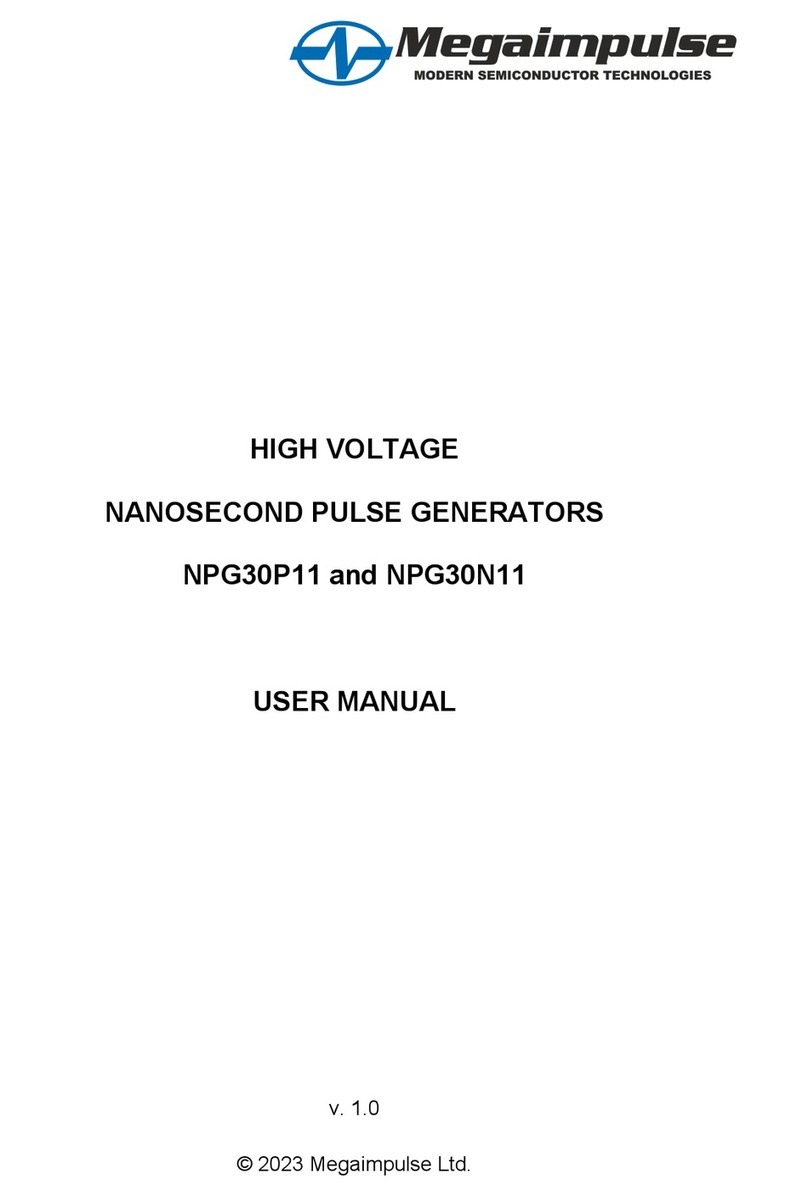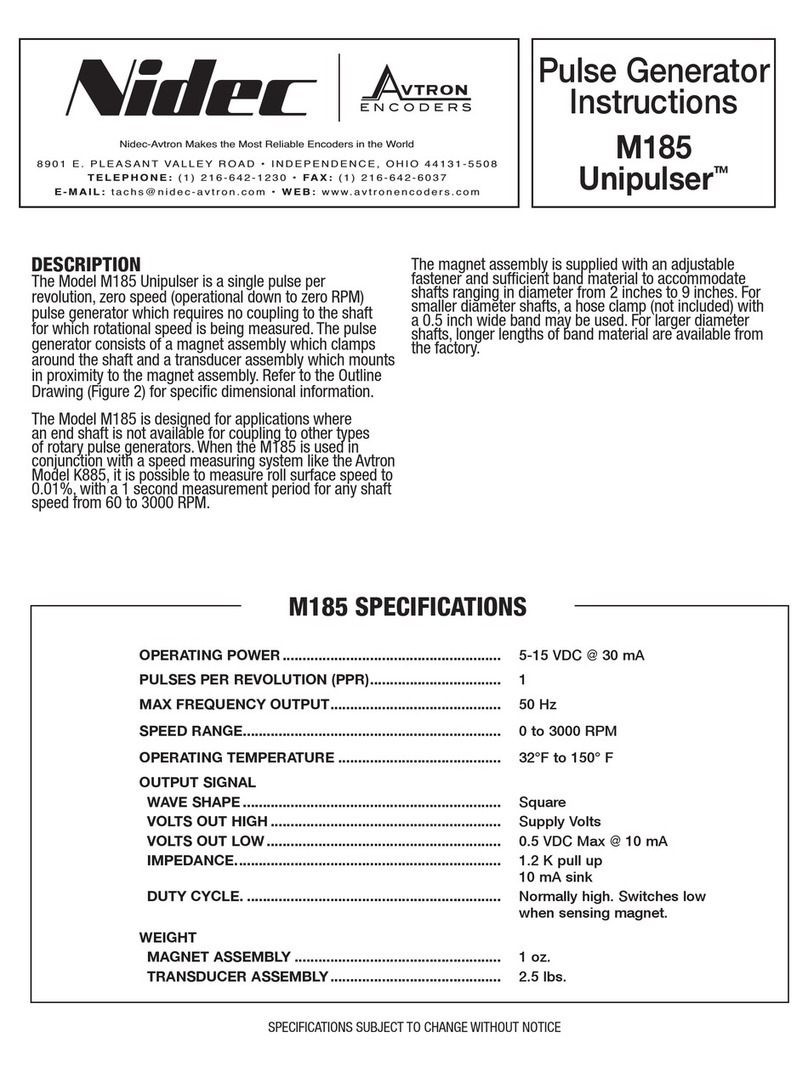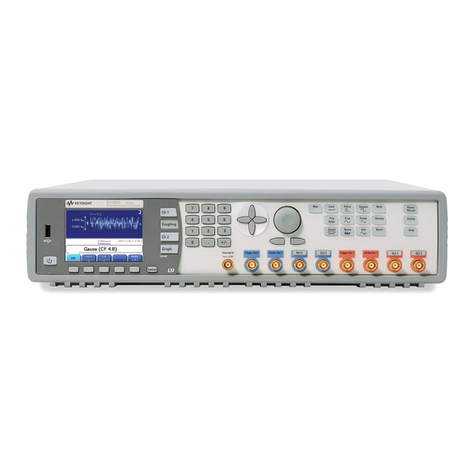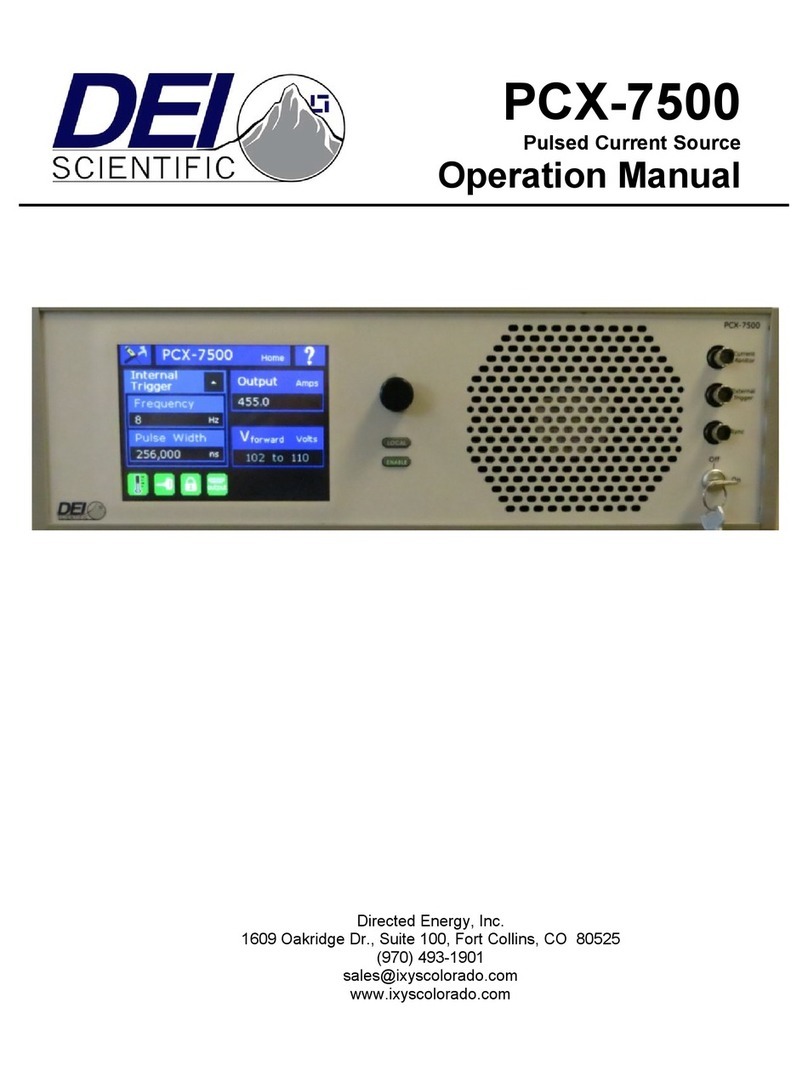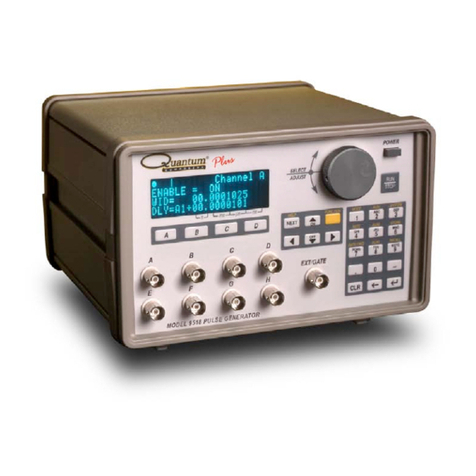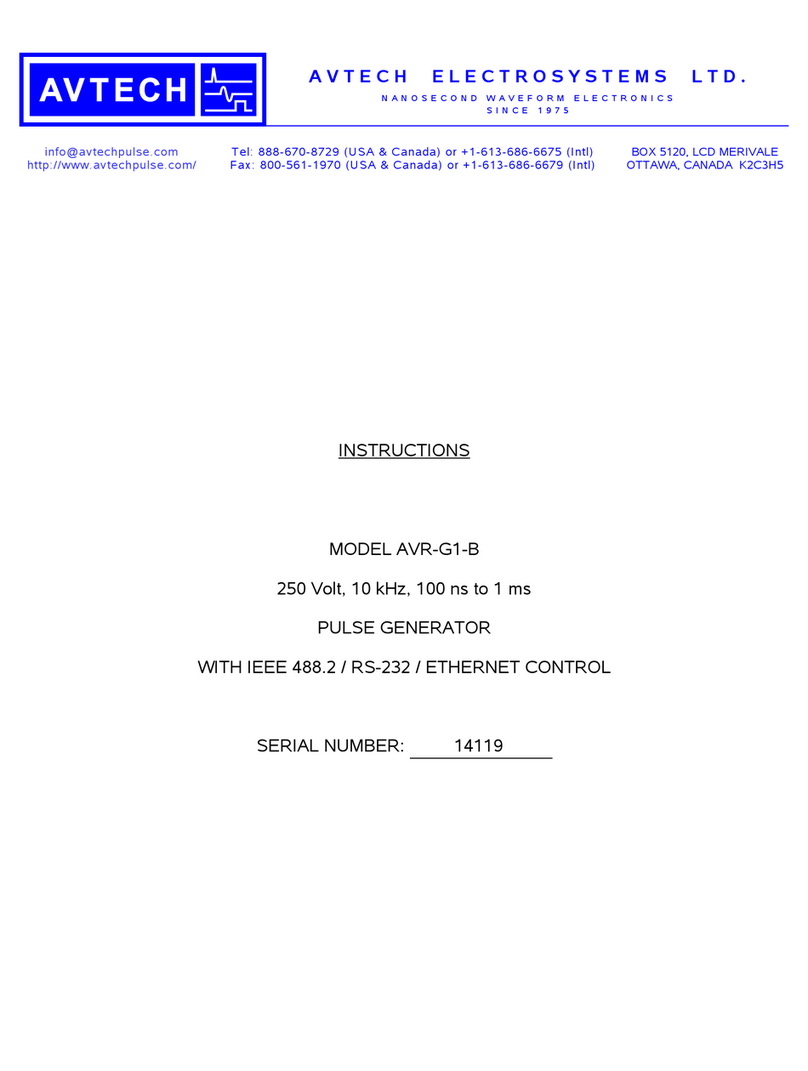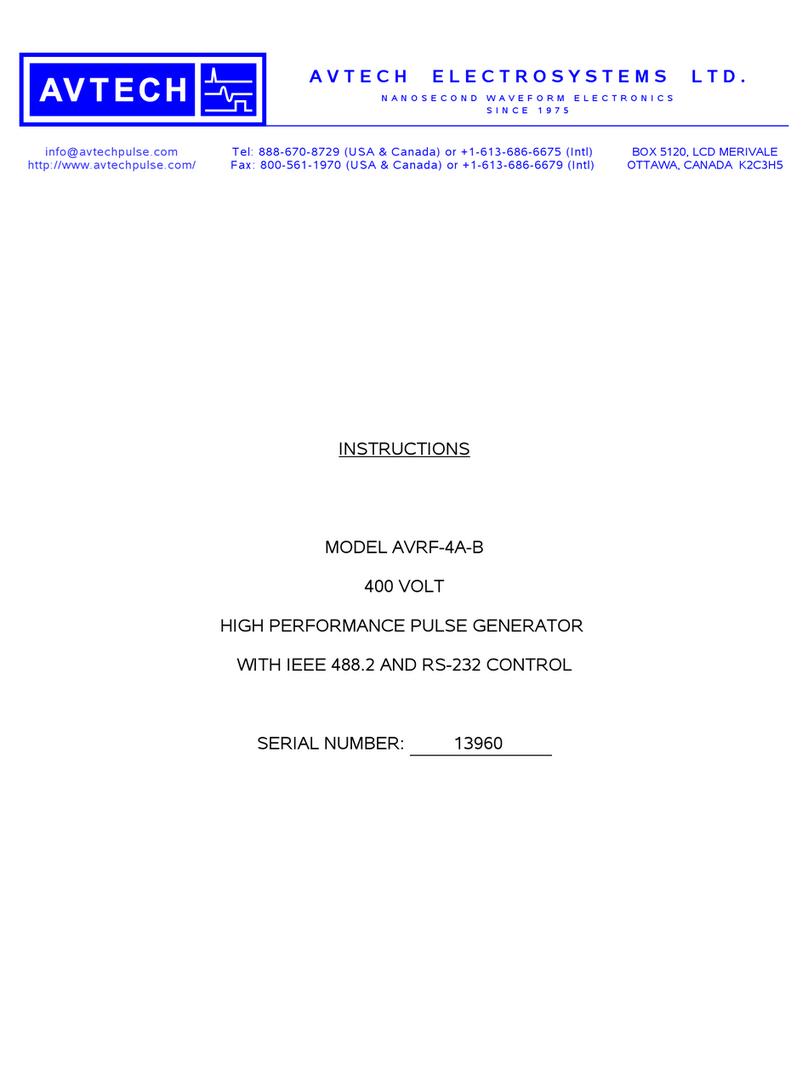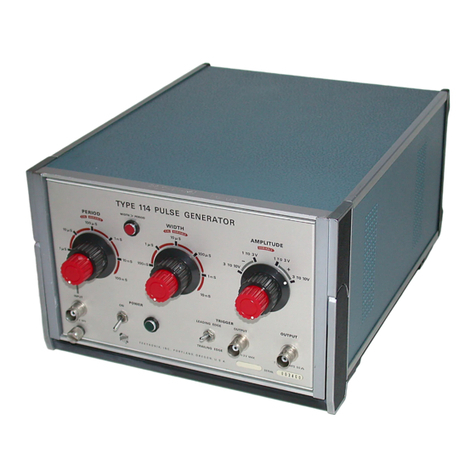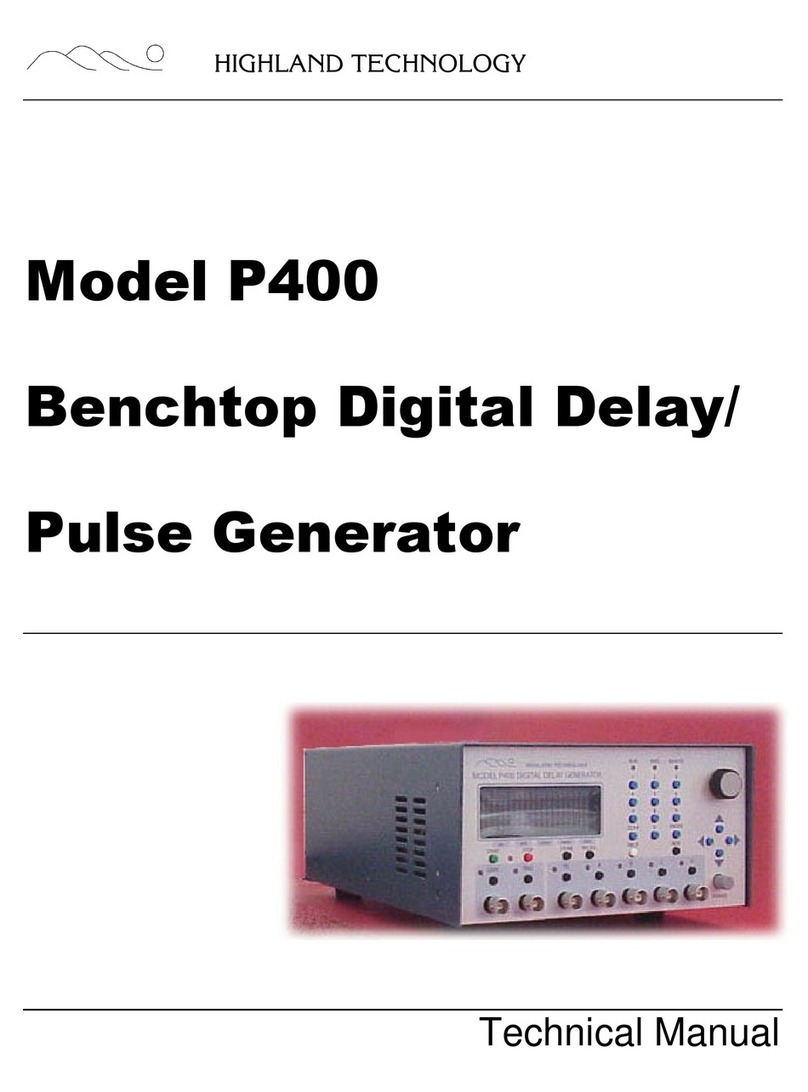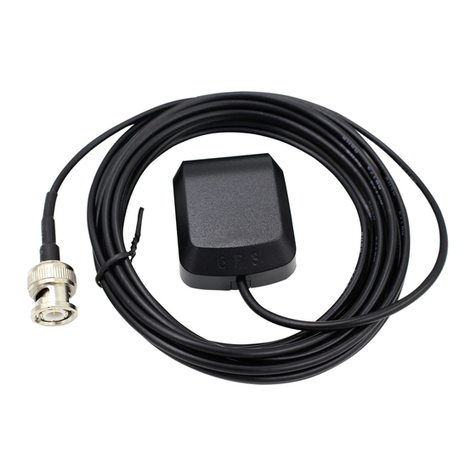
SPECIFICATIONS
Model: AVMP-2-B2
Amplitude ,4: (50Ω load) 0 - 10 Volts
Pulse width (FWHM): 5 ns - 100 ns
Maximum PRF: 1 MHz
Maximum duty cycle: 10%
Rise time5 (20%-80%): ≤ 100 ps
Fall time5 (80%-20%): ≤ 1 5 ps
Required load impedance: 50 Ohms12
Polarity6,7: Positive or negative or both (specify)
GPIB and RS-2 2 control2: Standard on -B units.
LabView Drivers: Check http://www.avtechpulse.com/labview for availability and downloads
Internet control (Telnet & Web): Optional11. See http://www.avtechpulse.com/options/tnt for details.
Propagation delay: ≤ 120 ns (Ext trig in to pulse out)
Jitter: ± 5ps ± 0.015% of sync delay
DC offset ,8: Apply required DC offset to back panel solder terminals
(± 50 Volts, 250 mA max)
Trigger required10: External trigger mode: +5 Volts, 10 ns or wider (TTL)
Variable sync delay,
Sync out to pulse out: 0 to 1.0 seconds
Sync output: + Volts, 100 ns, will drive 50 Ohm loads
Monitor output option9: Provides a 20 dB attenuated coincident replica of main output
Connectors: Out, Monitor: SMA, Trig, Sync, Gate: BNC
Power requirements: 100 - 240 Volts, 50 - 60 Hz
Dimensions: (H x W x D) 100 mm x 4 0 mm x 75 mm ( .9” x 17” x 14.8”)
Chassis material: cast aluminum frame & handles, blue vinyl on aluminum covers
Temperature range: +5°C to +40°C
1) -C suffix indicates stand-alone lab instrument with internal clock and line powering. No suffix indicates miniature module requiring DC power and
external trigger. (See http://www.avtechpulse.com/formats for the basic instrument formats).
2) -B suffix indicates IEEE-488.2 GPIB and RS-2 2 control of amplitude, pulse width, PRF and delay (See http://www.avtechpulse.com/gpib).
) For analog electronic control (0 to +10V) of amplitude, pulse width, or offset, suffix the model number with -EA, -EW or -EO. These units also include
standard front-panel controls. Not available on modules.
4) For operation at amplitudes of less than 20% of full-scale, best results will be obtained by setting the amplitude near full-scale and using external
attenuators on the output.
5) Add 20% to the rise and fall times if an inverting transformer used.
6) For single polarity units, indicate desired polarity by suffixing model number with -P or -N (i.e. positive or negative). For the dual-polarity AVMP-2-C
and AVMP- -C units, suffix the model number with -P-PN or -N-PN where the suffix preceding -PN indicates the polarity at the mainframe output
port. For dual-polarity -B units, simply add suffix -PN.
7) Polarity inversion in dual-polarity AVMP-2-C and AVMP- -C units is achieved by manually adding a supplied inverting transformer accessory to the
main output. The transformer will increase the rise and fall times slightly. Polarity inversion in dual-polarity “-B” units, and the AVMP-4-C, is controlled
by front-panel settings (or computer command for -B units), and no external transformer is required, and no speed degradation occurs when changing
polarities.
8) Add -OT to model number for internally generated 0 to ±5V offset option. -OT and -EO options not available on modules or AVMP-4 models.
9) Add -M to model number for monitor option.
10)Add -ECL to the model number to specify an ECL-level trigger input (-1.6V and -0.8V logic levels) instead of TTL.
11)Add the suffix -TNT to the model number to specify the internet control option.
12)A 50 Ohm load is required. Other loads may damage the instrument. Consult Avtech (info@avtechpulse.com) if you need to drive other load
impedances.
6
